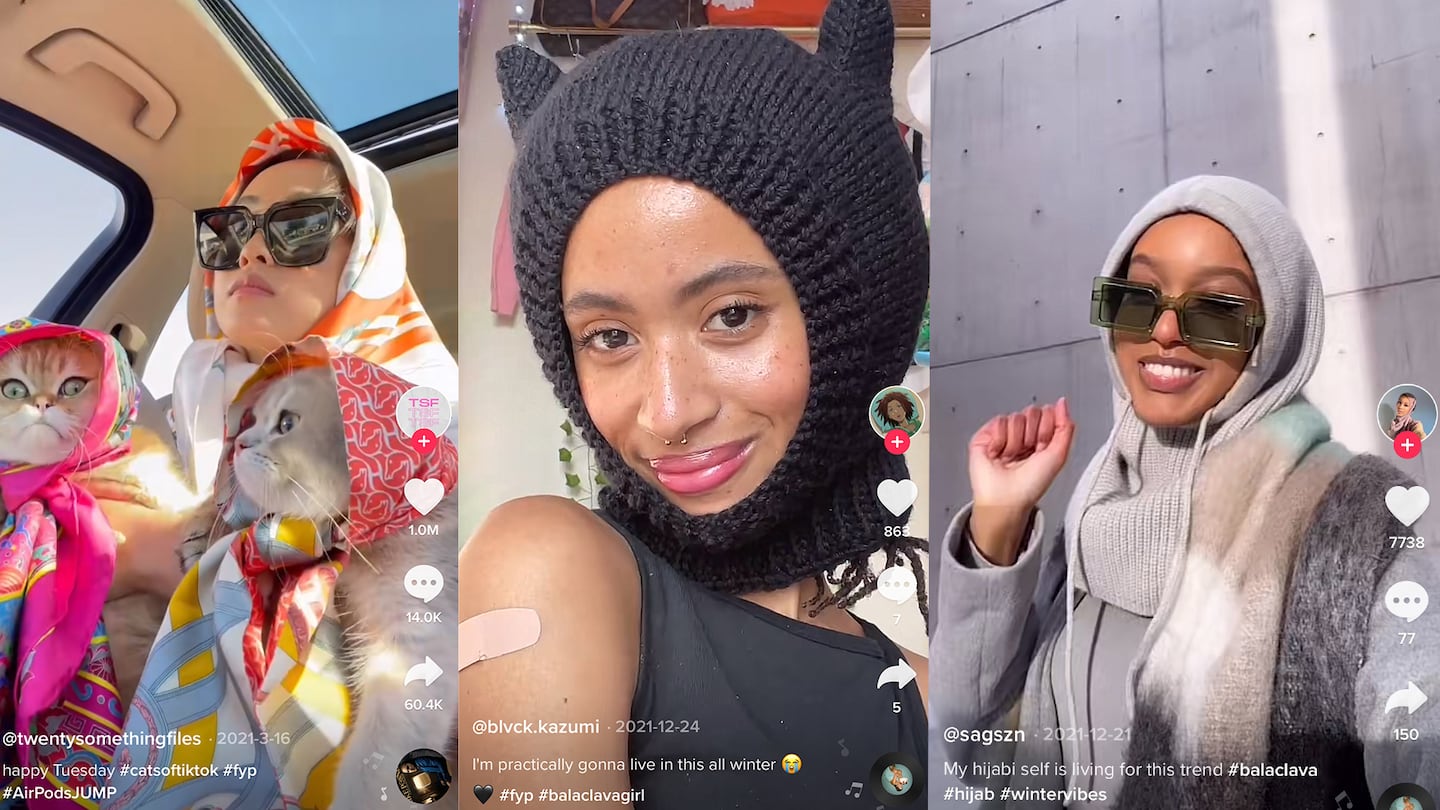
The Business of Fashion
Agenda-setting intelligence, analysis and advice for the global fashion community.

Agenda-setting intelligence, analysis and advice for the global fashion community.

It’s increasingly difficult to see who is exactly behind fashion’s trends — literally.
Babushka-style headscarves, knitted balaclavas and other accessories that fully cover the head, often paired with large sunglasses, have gone from niche styles to mainstream staples that are fuelling luxury brands and Etsy dealers alike.
Recent collections from Miu Miu, Jacquemus, and, perhaps most notably, Balenciaga have all offered interpretations of head coverings and masks with high-profile fanatics including Kim Kardashian and Kanye West. Fast fashion brands such as Shein have followed suit, selling a range of knitted hoods and scarves.
The result has been consumers swaddled in endless headwear options, with increasingly outlandish pieces at the intersection of two seemingly opposing pandemic wardrobes: comfortable and cozy loungewear and more eccentric eveningwear.
ADVERTISEMENT
“There is this desire for sort of psychological or physical protection that we get from our clothing, which people are more attuned to because of the pandemic,” said GQ fashion critic Rachel Tashjian. “But I think also there’s this other psychological effect of clothing, which is that people are just feeling looser and more experimental with what they’re wearing.”
After fashionable face masks proliferated early in the pandemic, many consumers became more comfortable with face coverings. Now, they’re open to trying new accessories.
“We’re kind of over the cute trendy masks,” said Vita Haas, co-founder of New York retailer Cafe Forgot. Other headwear options have been selling well, from knitted balaclavas to more outlandish hat designs, and designers are eager to continue experimenting with more styles and variations.
“It’s a perfect storm because a balaclava as a fashion item I think pre-Covid would be much more niche,” said Sidney Morgan-Petro, head of retail and buying at WGSN.
Early Beginnings
Balaclavas emerged during the Crimean War, taking its name from the site of an 1853 battle at the Ukrainian port town of Balaclava before being adopted by eastern European militias to avoid surveillance. Influences on the trend are now wide-ranging, from Martin Margiela to the UK’s drill rap scene to 1960s and ‘70s couture, added Tashjian.
In the first part of 2020, trend forecasting company WGSN noted an uptick in sales in silk headscarves and bandanas, led in part by an earlier 2018 renaissance of silk scarves from a range of luxury brands like Gucci and popularised by artist A$AP Rocky. The trend was subsequently revived on TikTok earlier last year with users sporting hooded scarves and sunglasses while driving.
Searches for balaclavas and knitted hoods have jumped 344 percent from 2020 to 2021, according to global fashion shopping platform Lyst, with headscarves alongside silk scarves and bandanas seeing a 102 percent increase over the same time period.
ADVERTISEMENT
Streetwear has embraced headwear as well. On StockX, trades of balaclavas increased more than fivefold in the fourth quarter of 2021, in part due to a Supreme collaboration with New Era in December. Balaclavas trade for two times their retail value, with senior StockX economist Jesse Einhorn adding that it’s “among the more hype apparel items” on the marketplace.
Small-scale knitwear designers have also seen their followings grow along with headwear’s popularity.
Alexandria Masse, a textile art student at NSCAD University in Nova Scotia, started posting her knitwear creations in early 2020 before focusing on headwear. Over the past few months, her Instagram page, which features her custom balaclava designs, gained over 35 thousand followers. One of her most popular items is her bunny balaclava, a full-face accessory with long knitted bunny ears that sell anywhere from $600 to $800.
“It’s just shifting into wearable art at this point,” said Masse.
After selling out of crocheted balaclavas, Almace, an Italian knitwear brand that launched in 2020, plans to expand further into headwear accessories.
“Every year is something new to cover your head and your face mask,” said co-founder Cecilia Tornati. “We’re trying to follow the wave and see which other items we can make that can have the same success.”
Still, the style has courted controversy, most notably with Gucci’s other foray into headwear, a balaclava sweater that was removed from its website in 2019 after accusations of blackface. On TikTok, many users have accused white influencers sharing balaclavas and other head accessories of cultural appropriation, pointing out that they’re able to wear such headpieces without fear of being racially profiled or targeted.
The babushka style has also applied to items like puffer scarves, said Morgan-Petro, adding that iterations of balaclavas, from full eye covered styles to more eccentric patterns, have commercial legs as the winter continues.
Haas noted that despite the TikTok trends, the audience for the headwear at Cafe Forgot was quite diverse, with older women and men coming in to buy new items: “These pieces have definitely had a larger reach than usual.”
The viral sensation that began with sorority rush videos at the University of Alabama and name-checked labels from LoveShackFancy to Kendra Scott offers a glimpse into fashion’s informal, subcultural future on the app.
This week, Chanel’s advent calendar controversy was a wake-up call for luxury brands without a compelling TikTok strategy: engage or cede the power to positively shape the digital conversation about your brand.
The company, under siege from Arkhouse Management Co. and Brigade Capital Management, doesn’t need the activists when it can be its own, writes Andrea Felsted.
As the German sportswear giant taps surging demand for its Samba and Gazelle sneakers, it’s also taking steps to spread its bets ahead of peak interest.
A profitable, multi-trillion dollar fashion industry populated with brands that generate minimal economic and environmental waste is within our reach, argues Lawrence Lenihan.
RFID technology has made self-checkout far more efficient than traditional scanning kiosks at retailers like Zara and Uniqlo, but the industry at large hesitates to fully embrace the innovation over concerns of theft and customer engagement.